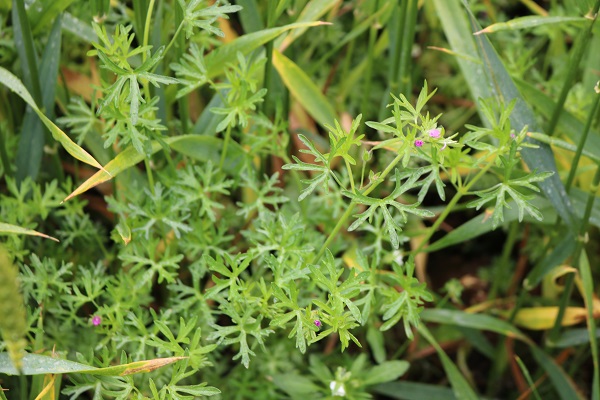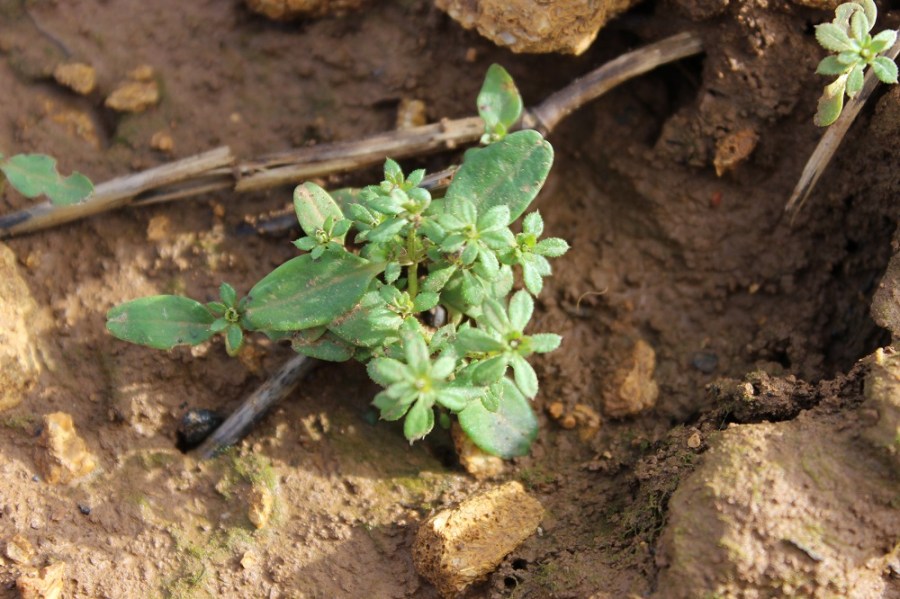Some of the chemistry’s old, some new but much needed solutions for some awkward broadleaf weeds are now available. CPM finds out about a new liquid SU, Provalia, and asks how to get the best out of last year’s newcomer, Pixxaro.
Sulfonylureas can struggle to provide satisfactory control.
By Lucy de la Pasture and Rob Jones
With a diminishing armoury of autumn cereal herbicides and resistance to some key residual options, broadleaf weeds have grown to become a serious problem in parts of the country, including along the M4 and M3 corridors where wild carrot, groundsel and charlock are now proving more difficult to control.
Stern Farms in Hants – part of Lord Wandsworth College – hasn’t escaped these tricky to control weeds, but it’s hoped that the launch this spring of the first liquid SU herbicide, Provalia LQM (metsulfuron-methyl+ thifensulfuron-methyl+ fluroxypyr) will provide faster knockdown on a broader spectrum of weeds and help deliver a cost-effective solution to their broadleaf weed problem.

Pixxaro picks up difficult to control weed, cranesbill, up to 10 cm tall.
Stern Farms supports 324ha of combinable crops, including 162ha of winter milling wheat grown on silty clay loams, rising-up to clay cap over chalk soils that can produce wheat yields of 10t/ha. Main varieties include Crusoe, Cordiale and Skyfall.
Hampshire Arable Systems agronomist Steve Cook, and farm manager Paul Sigley, have worked hard to keep weeds controlled on the farm. Blackgrass has been kept in check by stacking autumn residuals and the weed’s dominance has been reduced to one small area in one field. However, later emerging and more pernicious broadleaf weeds, such as charlock, have started to increase as the autumn residuals run out of steam.
Weed spectrum of Provalia

Source: DuPont
“Charlock is so competitive in oilseed rape that it can reduce yields and affect quality,” says Steve Cook. “With a limited herbicide armoury for use in OSR, it means that control of this weed falls mainly to control strategies in wheat. Charlock plant populations of 200 plants/m2 at any one time are not uncommon.”
Other weeds commonly found on the farm include poppy, mayweed, cleavers, fumitory and speedwell.
A typical winter wheat herbicide programme would be pre-emergence Crystal (flufenacet+ pendimethalin) plus DFF followed by either autumn or spring Atlantis (mesosulfuron-methyl+ iodosulfuron-methyl-sodium), and if necessary a spring applied Ally Max (metsulfuron-methyl+ tribenuron-methyl) plus Starane (fluroxypyr) tank-mix.
Where broadleaf weeds such as wild carrot, groundsel and charlock have become difficult to control, the inclusion of Provalia to the winter cereal herbicide portfolio brings gravitas to control programmes, says Steve Cook.
“When autumn residual herbicides start running out of steam, we see problems with broadleaf weeds,” he says. “And by May, weeds are often large so sulfonylureas can struggle to provide satisfactory control, especially of charlock and cleavers which keep emerging throughout the season.
“We’ve the option of going back in with Starane for cleaver control but there are often other weeds to consider so a product with a broader spectrum is needed.”
Steve Cook had a look at Provalia in trials last year and saw impressive knock down of most of the key broadleaf weeds. It provides much quicker activity and is good on both small and larger weeds, over a broader spectrum of species, he explains.
“In the trial, Provalia picked up some weeds not adequately controlled before, such as speedwell and wild carrot, which is a major bonus. We’ve been working closely with DuPont to find a way of taking out wild carrot and are keen to continue supporting their R&D involvement.
“Wild carrot is now very common in our region. It has a large tap root and continues to grow over the winter and keeps springing up all over the place. The metsulfuron-methyl component in Provalia is very good at controlling the weed.
“Provalia isn’t new chemistry but it’s a new formulation of actives that we haven’t had before. The fact that it’s in one container is also a benefit because it’s much easier to use and there’s less packaging too, which in today’s more sensitive environment is an added advantage.”
Unique to Provalia is that it can also be used as part of a three-way sequence with other ALS herbicides such as FPU (flupyrsulfuron) and Atlantis WG.
“Until now, a maximum of two applications of ALS herbicides have been allowed, which has restricted the choice of a spring herbicide when FPU and Atlantis have been used as part of an autumn grassweed strategy,” explains Steve Cook.
He notes that the spring herbicide Spitfire (fluroxypyr+ florasulam) still has a place in Stern Farms herbicide regime, but it has some holes in its control spectrum, he says, citing groundsel and fumitory as examples.
“We’ve had good results from using Ally Max plus Starane for broad spectrum control, but it’s the thifensulfuron-methyl in Provalia that adds a vital boost to fluroxypyr for cleaver control. Because Provalia is faster acting, it also means we’ve the option of using it when the weather is cooler. As a liquid formulation, it’s definitely improved uptake and control,” he believes.
Last year Dow AgroSciences launched the first new active ingredient for broadleaf weed control in cereal crops for two decades. Pixxaro EC is based on the company’s new active ingredient, Arylex (halauxifen-methyl) and fluroxpyr, which needs no introduction to growers as the active ingredient in the old-stager, Starane.
Dows’ cereals herbicide specialist, Stuart Jackson, says the product’s key USP is flexibility, providing reliable control of cleavers, cranesbill, poppy, dead nettles, fumitory and chickweed in cold, damp or warm conditions.
“Pixarro isn’t just another synthetic auxin-based (hormone) herbicide. It has a unique binding site enabling it to work reliably during poor growing conditions. Growers who want to get on with spring weed control early can spray in cold conditions and allow Pixxaro to sit in the plant until it starts to grow without any degradation,” he explains.
“It has excellent compatibility with a range of fungicides, grassweed killers and PGRs, meaning that it can tank-mix well with other applications later in the season.”
Typical dose rates are low at just 0.5 l/ha, but Stuart Jackson recommends a tailored approach from agronomists and growers to tackle the issues specific to the farm. Growers who didn’t apply a residual herbicide, or have found the application to be ineffective, may have pansies and large speedwells to control this spring, he warns.
Winter cereals can be treated from three leaves from 1 Feb and spring cereals from 1 Mar, right up to GS45.
“Mixing Pixxaro and 75 ml/ha of DFF in cool, moist conditions early on would get a complete job,” he suggests.
Alternatively, a tank-mix with a picolinafen-based product such as Picona at 2.0 l/ha is extremely effective. Mid-season, mixing 0.375 l/ha Pixxaro and an SU at half rate, or a dicamba-based product such as High Load Mircam at 1.0 l/ha will cover a wide spectrum of weeds, he says.
“In trials, Pixxaro has shown to be a real cleaver killer, delivering better control than all other products in the market. The simplest and most reliable way is mixing 0.25 l/ha Pixxaro with T1 or T2 fungicides to take out this competitive weed, with visible results by the time the sprayer is leaving the field.”
For optimum performance during tough conditions, Stuart Jackson advises growers to mix in an adjuvant.
The non-ALS mode of action is also likely to appeal to growers with poppy and chickweed with suspected or confirmed resistance to sulfonylurea products. The product is now available to growers for use in winter and spring cereal crops, except oats.
There are no specific requirements restricting nozzle choices or water volumes, and growers have a full range of following crop options, with the exception of small-seeded legumes. The product also has a 5m reducible buffer zone, he explains.




